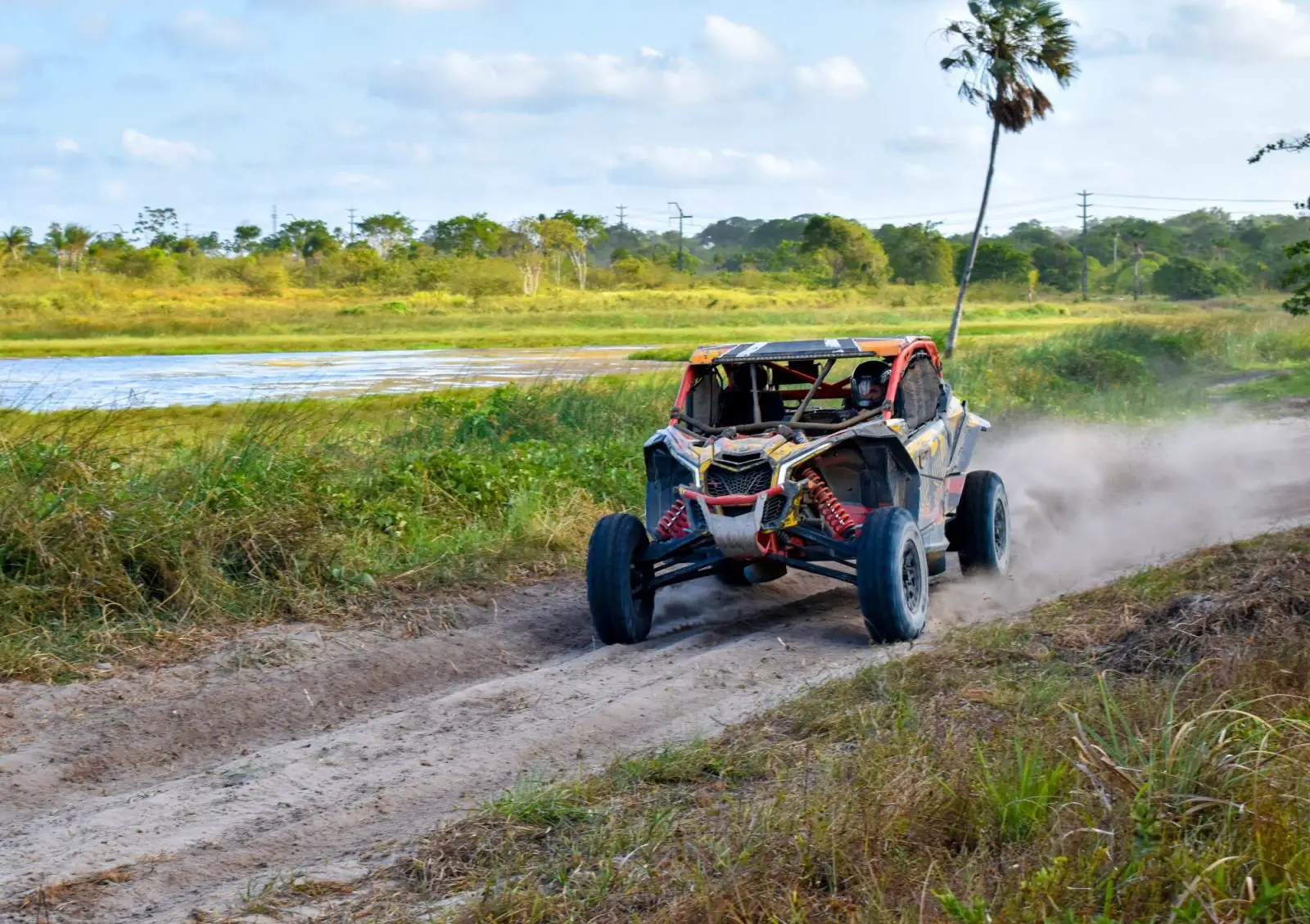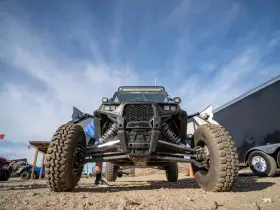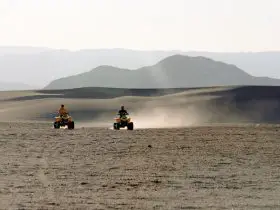Driving a UTV can be a lot of fun. However, it doesn’t come without its challenges. Rookie UTVers tend to make a bevy of mistakes, some of which risk their safety, and some of which impair their ability to have a good time. Curious as to the mistakes you should be avoiding? Then read on. Here are 10 common mistakes to avoid when driving UTVs.
Table of Contents
1. Riding By Yourself
Perhaps the biggest UTV mistake you could make is the mistake of riding by yourself. This is always a bad idea because it always has the potential to leave you stranded in the event of an injury or accident. After all, if no one witnesses the accident, no one can help you.
You should always ride with at least one more UTVer. You should stick close to your fellow UTVers as well, as it’s important to have others nearby in the event that you require urgent care.
Yes, it can be tempting to just take off and hit the trails, but the convenience is never worth the risk. Find a group of regular riding partners and maintain a consistent riding schedule.
2. Failing to Bring Spare Parts With You
UTVs are fairly resilient vehicles. However, they can still break down on occasion. Rest assured, they break down much more frequently than cars.
For this reason, when hitting the trail, you need to bring spare parts with you. This way, should your vehicle stop running, you can repair the part on the spot and get it back to civilization.
The two most important parts to bring include a CVT belt and spare tires. These are the components that are most susceptible to break-down and are also the components that are most easily fixed on the spot.
Learn how to change these components as well. They won’t do you much good if you don’t know how to put them on. For starters, here’s how to change a UTV tire.
3. Failing to Wear the Proper Gear
Riding a UTV is a high-impact and potentially dangerous activity. It’s not at all uncommon for riders to suffer injuries on the trails. Unfortunately, many of these injuries exist because the riders failed to wear the proper protective gear.
The point is, you need to wear protective gear while riding. Failing to do so can result in some of the worst injuries imaginable, from brain damage to paralysis, and, in some cases, even death.
The equipment you need to wear includes a helmet, goggles, padded gloves, boots, cushioned pants, and a cushioned, long-sleeved shirt.
4. Not Practicing Etiquette on the Trail
You don’t want to be one of “those guys,” one of those riders who is careless and pays no mind to others. You have to be mindful of other riders as well as those around you who aren’t riding. Failure to do so will make you look like a jerk, and, in some cases, could even get you embroiled in verbal and/or physical altercations.
But what does good trail etiquette look like? It looks like riding on the right side of the trail, slowing down when you come upon corner turns and other low-visibility areas, alerting passing drivers (with your fingers) as to how many people there are in your riding group and reading up on and following the rules for specific trails.
In short, be empathetic to others, act like a good human being, and use your common sense. Do this and you should be able to avoid inter-personal trouble.
5. Failing to Check on the Tires
When it comes to UTVs, the tires are the most important components to worry about. They not only contribute greatly to the vehicles’ functionality but they also tend to wear down rather quickly. If you go out on the trails with bad tires, you greatly increase your risk of getting into an accident.
Curious as to what you should look out for when assessing your tires? Some of the most important things to keep an eye on are cracks between treads, cracks in the sidewalls of the tires, proper air pressure, and worn down tread lugs.
If you see even one of these problems, you need to change your tire immediately. Don’t risk your safety by seeing how much strain you can put on your tire.
For more information on UTV tires, see our articles on tire pressure and when to replace a tire.
6. Failing to Ease in the CVT Belt
UTVs are power vehicles that can reach speeds of up to 85 miles per hour. However, in order to do this, they have to put tremendous strain on their CVT belts. The more strain the CVT belt receives, the quicker it will break and the quicker it will need to be replaced.
What you might not realize, however, is that you can acclimate the CVT belt to your driving conditions. In other words, you can break it in so that it’s properly prepared to handle high speeds.
The key is to start your riding sessions at a relatively low speed (under 30 miles per hour). Try to keep it at this speed for the first 20 to 30 minutes of riding. Then, start ramping that speed up.
By about 40 minutes in, you can push it to its limit. The CVT belt will be broken in and will be able to resist the strain that’s being put on it.
7. Riding While Under the Influence
This shouldn’t come as much of a surprise but driving UTVs while under the influence of drugs or alcohol is extremely dangerous. Nevertheless, plenty of people do it. Rest assured, all of these individuals are making a mistake.
Drugs and alcohol slow your reaction time, impair your vision, and make you do things that you normally wouldn’t do. None of these things jibe well with moving over rough terrain at 45 to 60 miles per hour.
Remember: you and your riding group can always drink afterward. But you should never drink before or during a riding session. Doing so could lead to serious injury or death, not only for you but for others around you as well.
8. Driving on Public Roads
From time to time, you might see UTVers riding on public roadways. If so, you must know that these individuals are making a mistake. This is true for a number of reasons.
For one, UTV tires aren’t meant to handle well on pavement. Because of their low air pressure and large treads, they tend to bounce and veer out of control.
For two, in most areas, UTVs aren’t allowed on public roads. In other words, riding a UTV on a public road is illegal.
Use a trailer to get your UTV to the trail and hook that trailer up to a road-friendly automobile. There will be plenty of time for fun once you get there.
9. Doing Donuts
Doing donuts in a vehicle can be a lot of fun. But it’s never recommended, especially when the vehicle in question is a UTV.
See, TTVs are tall and narrow and are equipped with long suspensions and squishy, malleable tires. As such, they can easily flip over on their sides. Doing donuts in a UTV is an almost surefire way to make that happen.
Riding on a rocky trail is a lot more fun anyway. You’ll get all of the excitement of donuts but with the added excitement of high speeds.
10. Riding on Non-designated Trails
The last mistake we’re going to discuss is the mistake of riding on non-designated trails. This leaves you more vulnerable to accidents and presents an unnecessary injury risk.
So, if you’re thinking about, say, taking your UTV out into the woods behind your house, you should refrain. Or, if you’re thinking about riding it up the side of a cliff, you should think again.
There are all sorts of UTV trails out there. Regardless of where you are in the world, you should have one within close proximity to you. A quick Google search of “UTV trails near me” should find you what you’re looking for.
Looking to Learn More About Driving UTVs?
As you can see, there are a number of mistakes that you can make when driving UTVs. But as long as you follow the tips above, you should be able to have a successful ride.
Looking to learn more about driving UTVs? Our website is the place to be. We cover all sorts of UTV-related topics, from riding techniques to safety precautions to UTV trails and more.
Check out some of our other articles right now!










